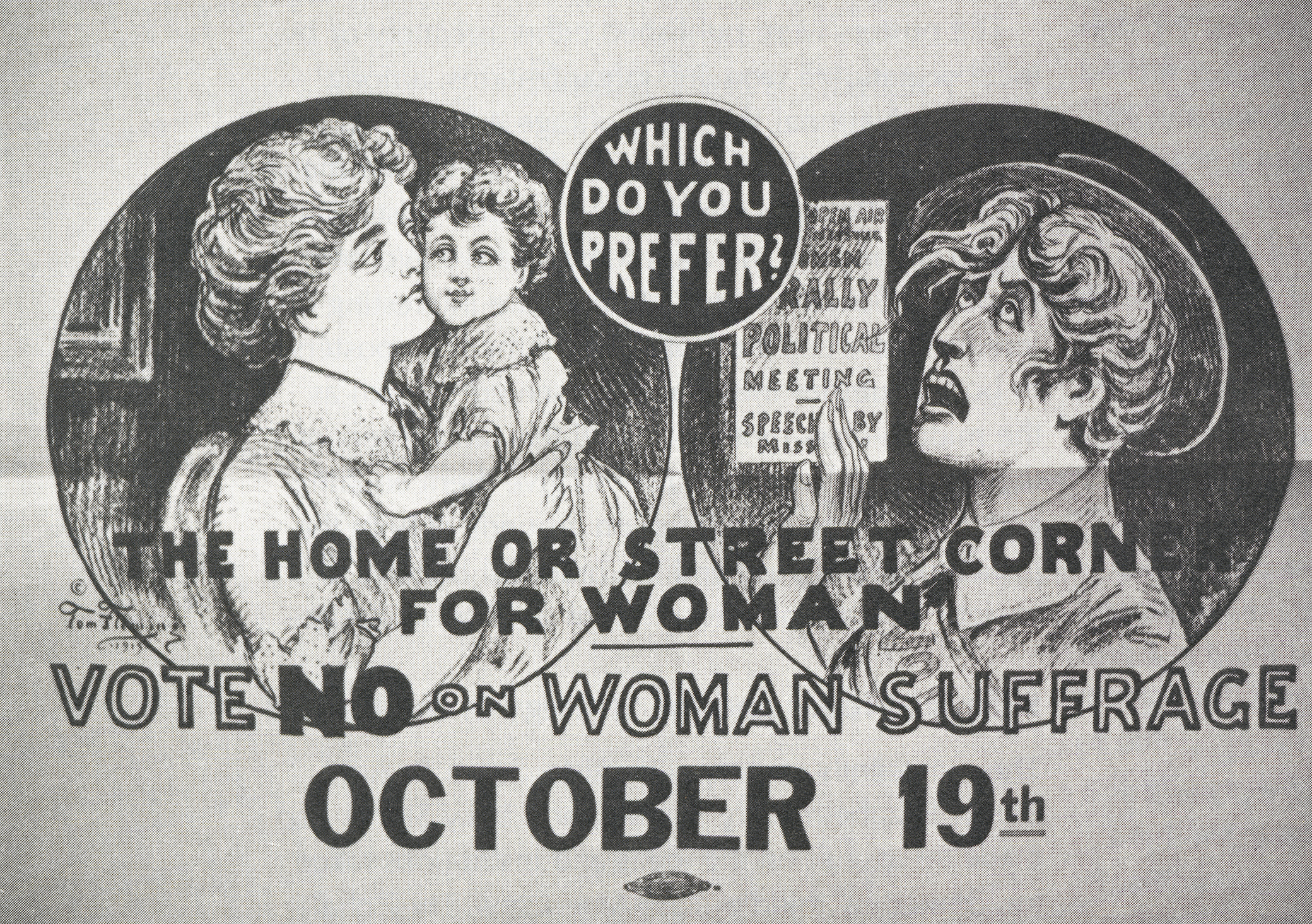
“Vote No on Woman Suffrage,” by Thomas Fleming, 1978. The New York Public Library, The Miriam and Ira D. Wallach Division of Art, Prints and Photographs.
• The birth of a ubiquitous word: “250 years ago this month the use of the word strike to describe a form of collective work stoppage entered the English language.” (Jacobin)
• Finding a lost, handwritten copy of the U.S.-Navajo Treaty. (The Washington Post)
• Reading Sylvia Plath’s thesis “on the doppelgänger—the concept of finding a mirror image, or a look-alike, in another human.” (TheAtlantic.com)
• A question for the centenary of women’s suffrage: “whether a century of women’s suffrage has changed the ways we read and write. Having ceased to be, as Aristotle would have us, perpetual children within the polis, do we think or express ourselves differently?” (The Times Literary Supplement)
• The history of the picnic table. (Places Journal)
• Watching the word outrage expand: “As recently as the mid-20th century, Americans used outrage very differently.” (The New York Times Magazine)
• On “the official photographer for Murder Inc.” (The New Yorker)
• This week in obituaries: an architect who built a “box on legs,” Philip Roth, a lawyer who worked on a case that ended the ban on segregation on interstate bus travel, and “an artist of consequence who gets mistaken for a one-hit wonder.”